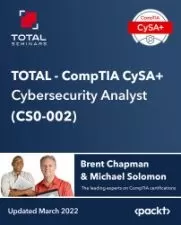Threat Modeling: Denial of Service and Expansion of Authority
Adam Shostack
46:09
Description
In this installment of Adam Shostack’s Threat Modeling series covering the STRIDE threat modeling framework, Adam goes over the D and E parts of the framework: denial-of-service and elevation-of-privilege. For both threats, Adam digs deep into two main questions: “What can go wrong?” and “What are we going to do about it?” He details the many targets of denial-of-service attacks like storage, memory, CPU bandwidth, and budget. Adam explains how elevation-of-privilege exists in basically any running code. He then goes over structured methods for ensuring that your systems are resistant to the various types of DoS attacks and elevation-of-privilege attacks. These attacks affect all manner of systems, and having an understanding of how they work and how to combat them are essential parts of a comprehensive approach to cybersecurity.
More details
User Reviews
Rating
Adam Shostack
Instructor's Courses
Linkedin Learning
View courses Linkedin Learning- language english
- Training sessions 28
- duration 46:09
- Release Date 2025/02/26










